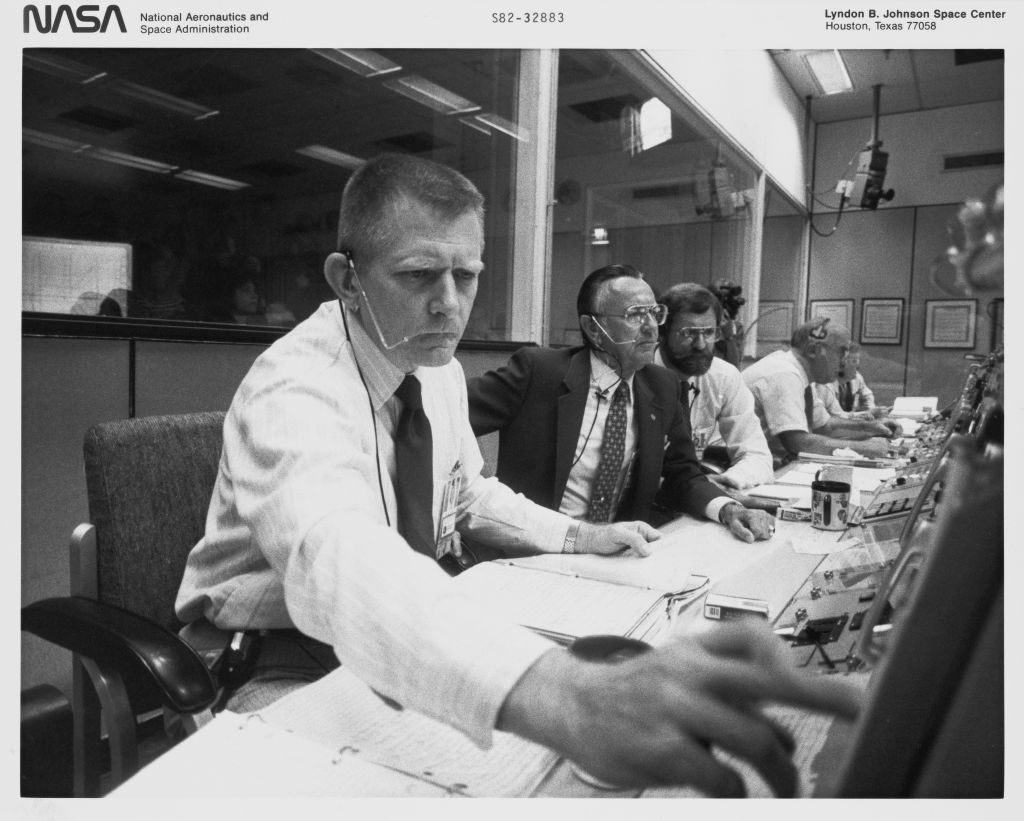The space shuttle carried 2 to 8 people into space when it flew. Most of us don’t realize that a shuttle mission required a crew as large as that of a modern U.S. Navy cruiser. More than 300 flight controllers at Johnson Space Center in Houston “flew” the mission from 20 stations in the Mission Control Building.
“Shuttle Mission Control: Flight Controller Stories and Photos, 1981–1992,” by Marianne J. Dyson, tells the story of those people and the Flight Control Room (FCR) at the heart of Mission Control.
The FCR was what the public thought of as Mission Control, the room televised during shuttle missions. It can be thought of as the ship’s bridge for shuttle missions. Dyson describes the FCR, its history, its layout, its role within Johnson Space Center, and how it worked.
The book’s real focus is the people running shuttle missions during the shuttle program’s early years. Dyson spends a chapter on each Mission Control station, describing what that station did, telling who the people at each station were and how they supported missions.
She starts with “the Trench,” at the front of the FCR. The bottom row of consoles, the Trench handled critical shuttle engineering activities: propulsion (fuel supply), data processing, guidance and rendezvous, trajectory and flight dynamics, and ground controller.
During Mission 51F (in July 1985), one of the shuttle’s three main engines shut down. A second was reported overheating. Dyson shows Flight Dynamics Officer Brian Perry, assisted by Jenny Howard at the booster console, making a split-second decision to press on, disregarding an errant temperature sensor—and their action saved the mission.

Dyson continues up the rows showing how the remaining stations played important roles, if not normally as time critical as Trench positions. They ranged from payloads to the flight director. Some are well known, such as the flight director, who “captains” the mission, and CAPCOM (capsule communicator), who talks to the orbiter crew.
Others, such as MMACS (mechanical, maintenance, arm and crew systems), are obscure but critical. MMACS such as Paul Dye were shuttle handymen, dealing with numerous mechanical glitches. Dye scrubbed one mission with five minutes to launch when a system threatened to fail. A tough call, but it proved correct.
Dyson, an award-winning author, was there. She was a flight activities officer; her husband, Thornton E. Dyson, was a guidance officer. Both were in the FCR on the shuttle’s first flight. “Shuttle Mission Control” is an intimate look at a remarkable team.
“Shuttle Mission Control: Flight Controller Stories and Photos, 1981–1992,” by Marianne J. Dyson, self-published by Marianne Dyson, 2021.
Mark Lardas, an engineer, freelance writer, historian, and model-maker, lives in League City, Texas. He is a former Shuttle navigator. His website is marklardas.com.




